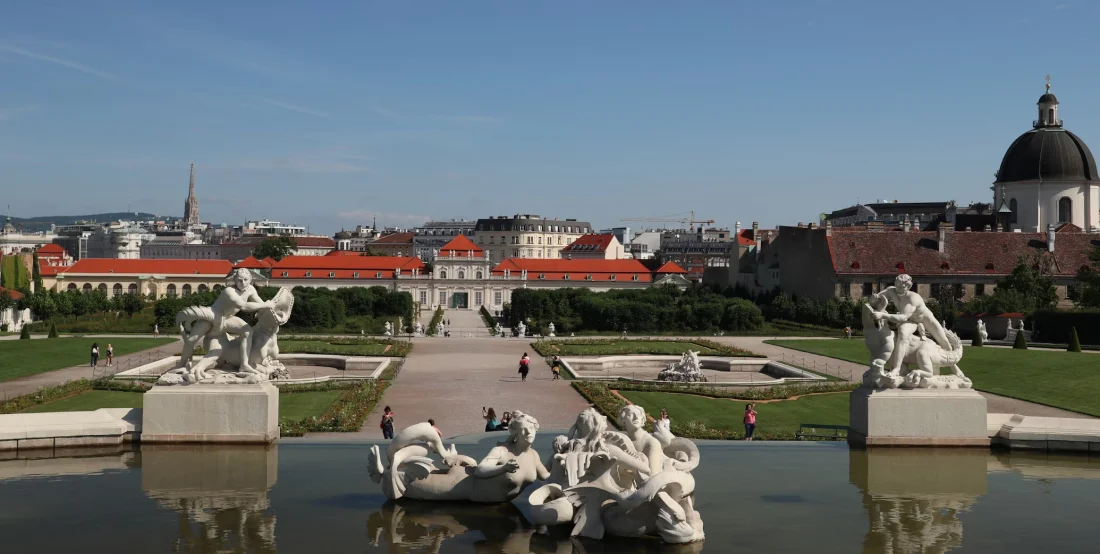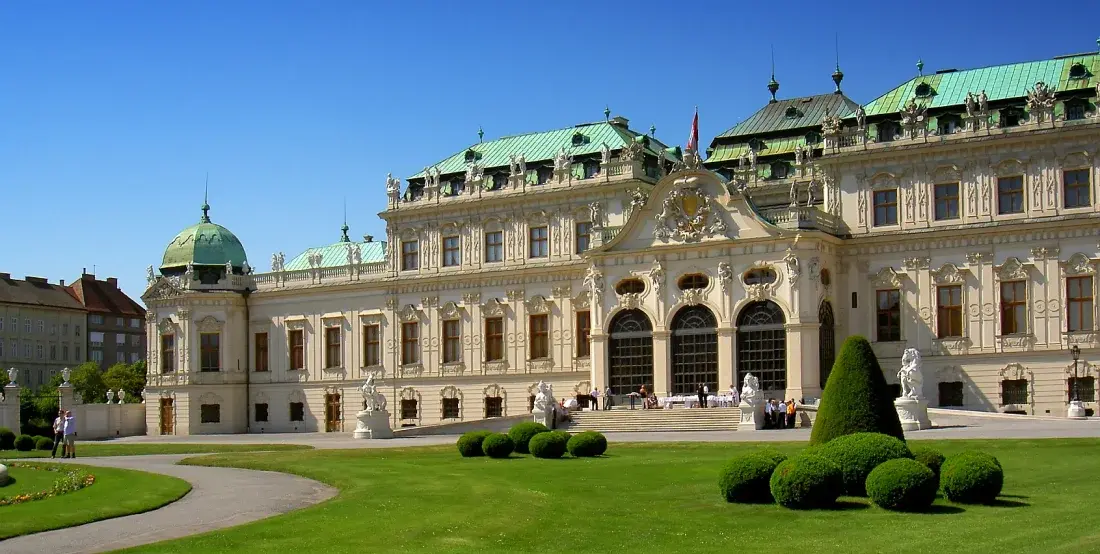The Belvedere Palace complex is more than just two palaces; it is a cultural treasure trove that offers a comprehensive look into Vienna’s artistic and historical evolution. The complex includes the Upper and Lower Belvedere, the Orangery, and the Palace Stables, each with its unique exhibitions and architectural features.
The gardens connecting the palaces are a highlight, providing a picturesque backdrop for visitors to explore. With its rich history, stunning architecture, and world-class art collections, the Belvedere Palace complex is a must-visit destination in Vienna, offering something for everyone to enjoy.
The location is easily accessible by public transportation, making it convenient for tourists staying in different parts of the city. Visitors can reach the palace by taking the tram (D line) to the Schloss Belvedere stop or the S-Bahn to the Quartier Belvedere station. Additionally, several bus lines serve the area, and there is ample parking for those arriving by car.
The palace is open year-round, with extended hours during peak tourist seasons. It’s recommended to check the official Belvedere Palace website for current information on ticket prices, special exhibitions, and any changes in opening times.
Photography is generally permitted, but flash and tripods are not allowed. It’s best to check for any specific restrictions in certain exhibitions or areas. Guided tours are also available in multiple languages, including English, to accommodate international visitors.

Belvedere Palace is a masterpiece of Baroque architecture, designed by the renowned architect Johann Lucas von Hildebrandt in the early 18th century. The complex was originally intended as a summer residence for Prince Eugene of Savoy, a military leader and art patron. Today, the palace is a UNESCO World Heritage site and a symbol of Vienna’s artistic and historical legacy.
The Upper Belvedere Place was designed by the architect Johann Lucas von Hildebrandt, it was completed in 1723 and served as a summer residence for Prince Eugene of Savoy.
The Lower Belvedere Palace was built between 1714 and 1716 and served as Prince Eugene’s primary residence. It was designed to complement the Upper Belvedere, offering a more personal and private space for the prince.
The palace’s architecture reflects the elegance and sophistication of the Baroque style, with its ornate decorations and symmetrical design. Today, it functions as a museum and exhibition space, providing visitors with an opportunity to explore the rich history and artistry of the Baroque era.

Visiting Belvedere Palace is a must for anyone exploring Vienna. The palace not only showcases breathtaking architecture but also houses one of Austria’s most important art collections. Visitors can admire masterpieces by renowned artists such as Gustav Klimt, Egon Schiele, and Oskar Kokoschka. The palace is a perfect destination for those looking to immerse themselves in the city’s rich cultural heritage.
Belvedere Palace is built in Broque style, which includes extensive layouts showcasing curves, symmetry, and ornamentation. The Upper Belvedere is the central point of the structure. It is surrounded by two wings. The facade is highly decorated with stucos, columns, and sculptures. The Lower Belvedere includes a guesthouse and Orangery overlooking a central garden.
Tourists can appreciate the art and history housed within this iconic site. At Upper Belvedere, visitors can view Klimt’s famous painting “The Kiss” along with other significant works from the Austrian Art Nouveau movement.
The grand Marble Hall in the Belvedere Palace, with its impressive ceiling fresco and other opulent rooms, reflect the palace’s historical significance. The Lower Belvedere offers a more intimate look at the prince’s former living quarters and features special exhibitions that change throughout the year. The Belvedere Palace is renowned for its rich exhibitions and collections, offering a comprehensive overview of architectural extravaganza.
BELVEDERE PALACE TICKETS
Entrance tickets to Belvedere Palace grant access to its renowned art exhibitions and beautiful gardens. The palace is divided into two main… see more
TRAVELER INFORMATION
Belvedere Palace has varying opening times depending on the season and the specific part of the complex you wish to visit. Typically… see more
BELVEDERE PALACE INFORMATION
Belvedere Palace, located in the heart of Vienna, is one of Austria’s most significant historical sites. This magnificent Baroque complex include… see more
